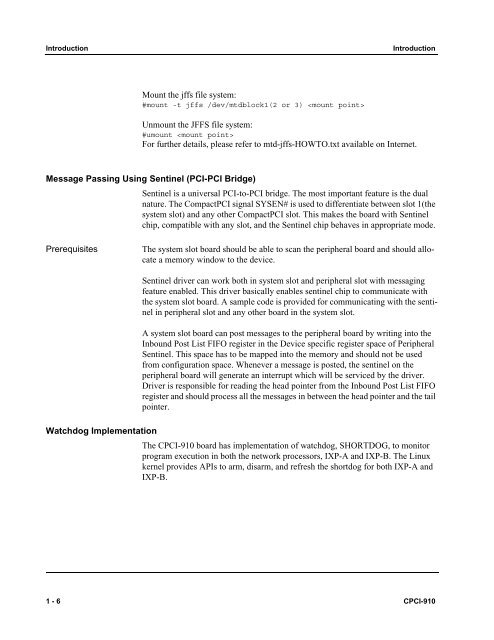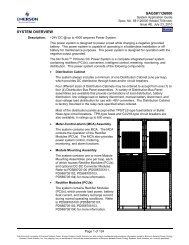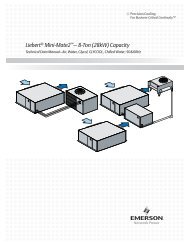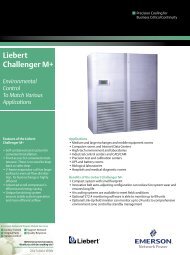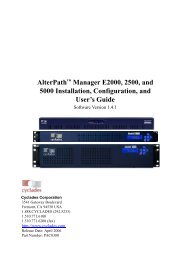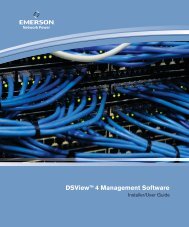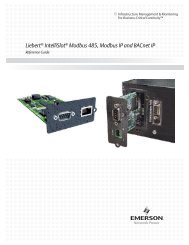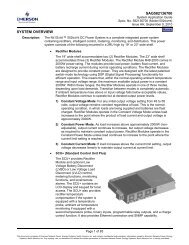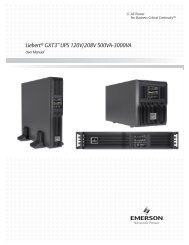CPCI-910 Programmer's Guide - Emerson Network Power
CPCI-910 Programmer's Guide - Emerson Network Power
CPCI-910 Programmer's Guide - Emerson Network Power
You also want an ePaper? Increase the reach of your titles
YUMPU automatically turns print PDFs into web optimized ePapers that Google loves.
Introduction Introduction<br />
Mount the jffs file system:<br />
#mount -t jffs /dev/mtdblock1(2 or 3) <br />
Unmount the JFFS file system:<br />
#umount <br />
For further details, please refer to mtd-jffs-HOWTO.txt available on Internet.<br />
Message Passing Using Sentinel (PCI-PCI Bridge)<br />
Sentinel is a universal PCI-to-PCI bridge. The most important feature is the dual<br />
nature. The CompactPCI signal SYSEN# is used to differentiate between slot 1(the<br />
system slot) and any other CompactPCI slot. This makes the board with Sentinel<br />
chip, compatible with any slot, and the Sentinel chip behaves in appropriate mode.<br />
Prerequisites The system slot board should be able to scan the peripheral board and should allocate<br />
a memory window to the device.<br />
Sentinel driver can work both in system slot and peripheral slot with messaging<br />
feature enabled. This driver basically enables sentinel chip to communicate with<br />
the system slot board. A sample code is provided for communicating with the sentinel<br />
in peripheral slot and any other board in the system slot.<br />
A system slot board can post messages to the peripheral board by writing into the<br />
Inbound Post List FIFO register in the Device specific register space of Peripheral<br />
Sentinel. This space has to be mapped into the memory and should not be used<br />
from configuration space. Whenever a message is posted, the sentinel on the<br />
peripheral board will generate an interrupt which will be serviced by the driver.<br />
Driver is responsible for reading the head pointer from the Inbound Post List FIFO<br />
register and should process all the messages in between the head pointer and the tail<br />
pointer.<br />
Watchdog Implementation<br />
The <strong>CPCI</strong>-<strong>910</strong> board has implementation of watchdog, SHORTDOG, to monitor<br />
program execution in both the network processors, IXP-A and IXP-B. The Linux<br />
kernel provides APIs to arm, disarm, and refresh the shortdog for both IXP-A and<br />
IXP-B.<br />
1 - 6 <strong>CPCI</strong>-<strong>910</strong>


